Ted, Dan, Vernie, and I spent the afternoon at Kitt Peak Observatory. I will shamelessly name-drop that Dan is an astronomer and did work at Kitt Peak on his sabbaticals as a professor of astronomy. Who better to take us to an observatory?
We took a tour with a very knowledgeable docent. His only mistake was starting his tour by asking (somewhat playfully) if anyone in the group was an astronomer. Personally, if I’d been in his place, I’d have been intimidated to be giving a tour to an astronomer who had previously done work at Kitt Peak, but the docent seemed to take it in stride.
Until today, I didn’t realize that there was more than one telescope at Kitt Peak. Actually, there are three operating night telescopes, two radio telescopes, and 22 optical telescopes on the premises.
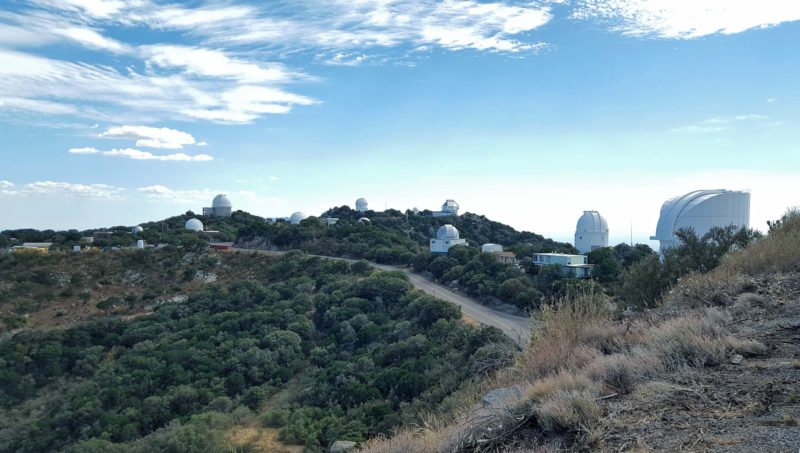
Here are some of the telescopes on Kitt Peak.
There is also a solar telescope that is no longer in use.
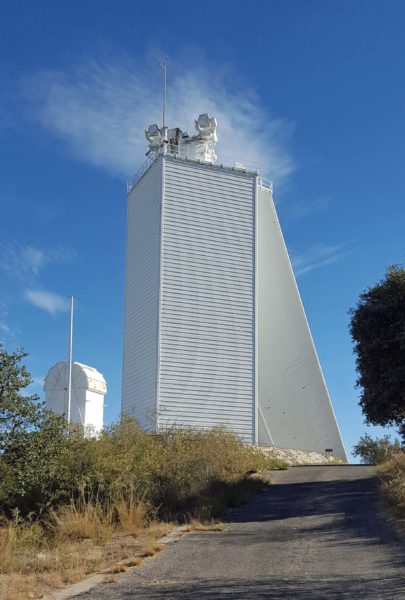
This is the solar telescope. I was trying to figure out what was inside this building, because I never saw a telescope that looked like this.

From inside the solar telescope building, you can look upward toward the sky to see where the light enters the telescope.
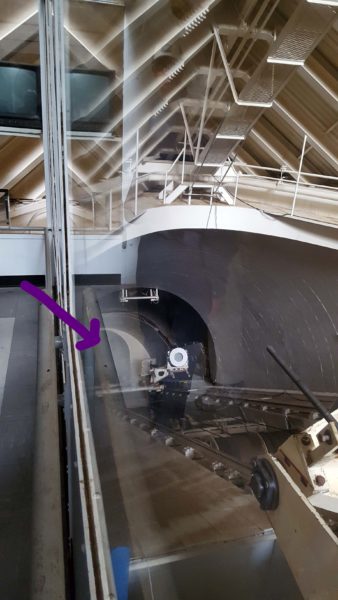
The focal length of the solar telescope is 285 feet. The light is reflected deep into the ground (arrow). I had to take this picture through a window, so it’s not great, but the telescope was very impressive.
Kitt Peak is one of the sites for the Very Long Base Array. The VLBA is a system of ten radio telescopes that are operated remotely from the Array Operations Center in Socorro, NM (home of the Very Large Array). These ten telescopes work together as an array that forms the longest system in the world using interferometry (simultaneous observations made by many radio telescopes, then combined to yield data as if from one extremely large telescope).
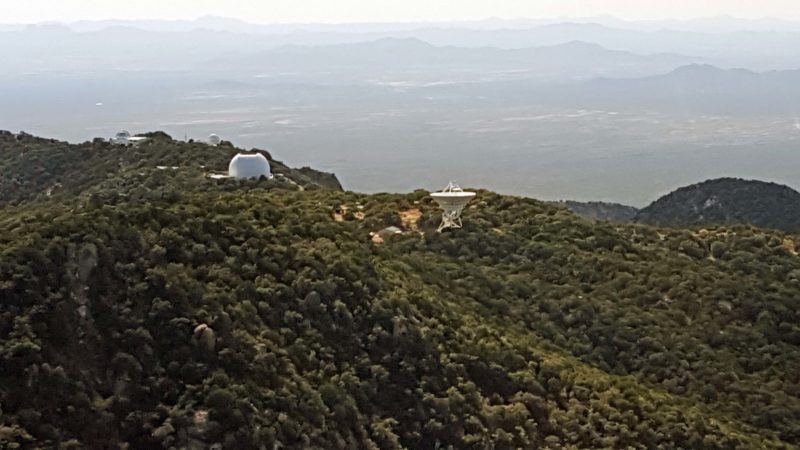
The telescope facing upward in the center of the picture is the VLBA radio telescope.
Kitt Peak’s four-meter telescope was installed in 1973. There was a lengthy delay in completing the mirror, so a concrete model of the mirror was built to the exact size and weight of the actual mirror. This allowed some of the other work on the telescope to progress. At the time it was completed, this telescope was the second-largest in the world.
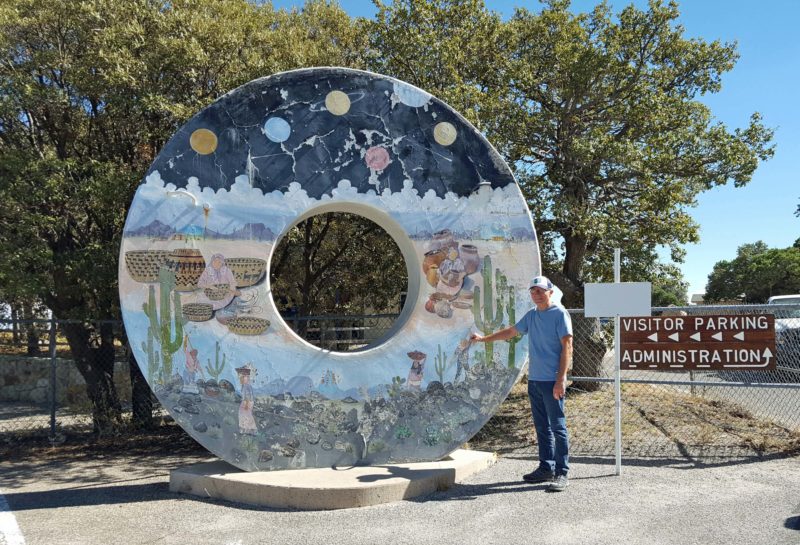
When the actual mirror was installed, one person suggested the 15-ton concrete model be rolled down the mountain. Instead, a mural was painted on it and it was placed at the entrance to the visitor’s center. Check out my trusty scale model (Ted) to see how big a 4-meter mirror is.
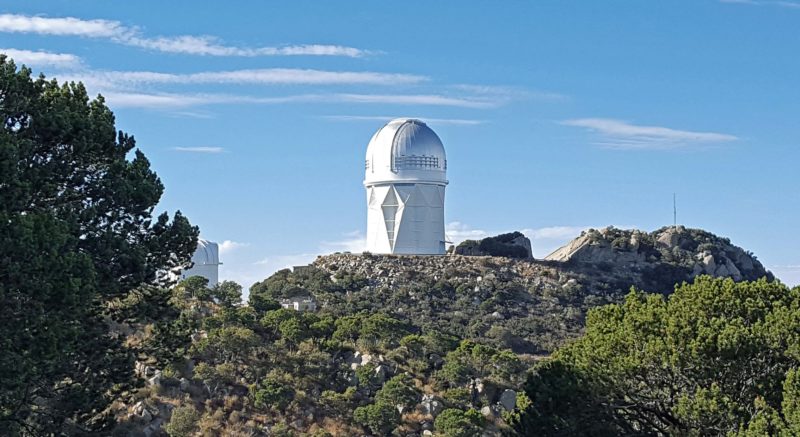
The building on which the telescope dome revolves is constructed of ten hexahedrons and is architecturally beautiful.
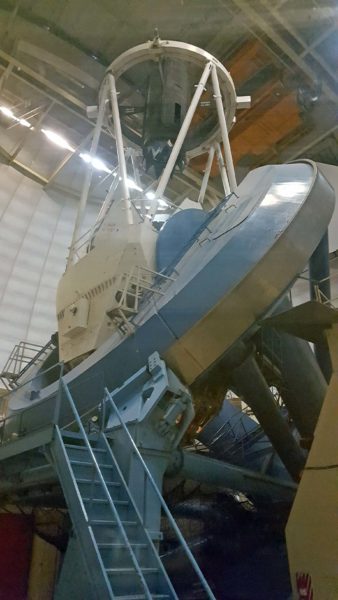
This is the 4-meter telescope. They were shifting the position of the telescope while we were inside, so we actually saw it moving. The black part within the white circle at the top is the piece that will look outside the building when the slot on the dome is opened.

Our tour took us to the level of the vents inside the dome. The vents are needed because the temperature in the dome must always match the temperature outside; otherwise, the mirror might cloud up when the door is opened and that would not be good for seeing stars.
Dan told us that when the Kitt Peak Observatory was built, location and access were important. In the digital age, however, no human actually looks through the telescopes; all of the visual information is transmitted electronically, so it doesn’t matter where the telescope is placed. As a result, remote Chile is a popular place for telescopes now because it is dark and high. I know that today’s technology will greatly increase our knowledge, but doesn’t it take the fun out of a telescope if you can’t look through it?
Note: Dan, if you are one of my select few readers, please correct any errors or misunderstandings I’ve made. Thanks. And thanks for taking us to Kitt Peak.